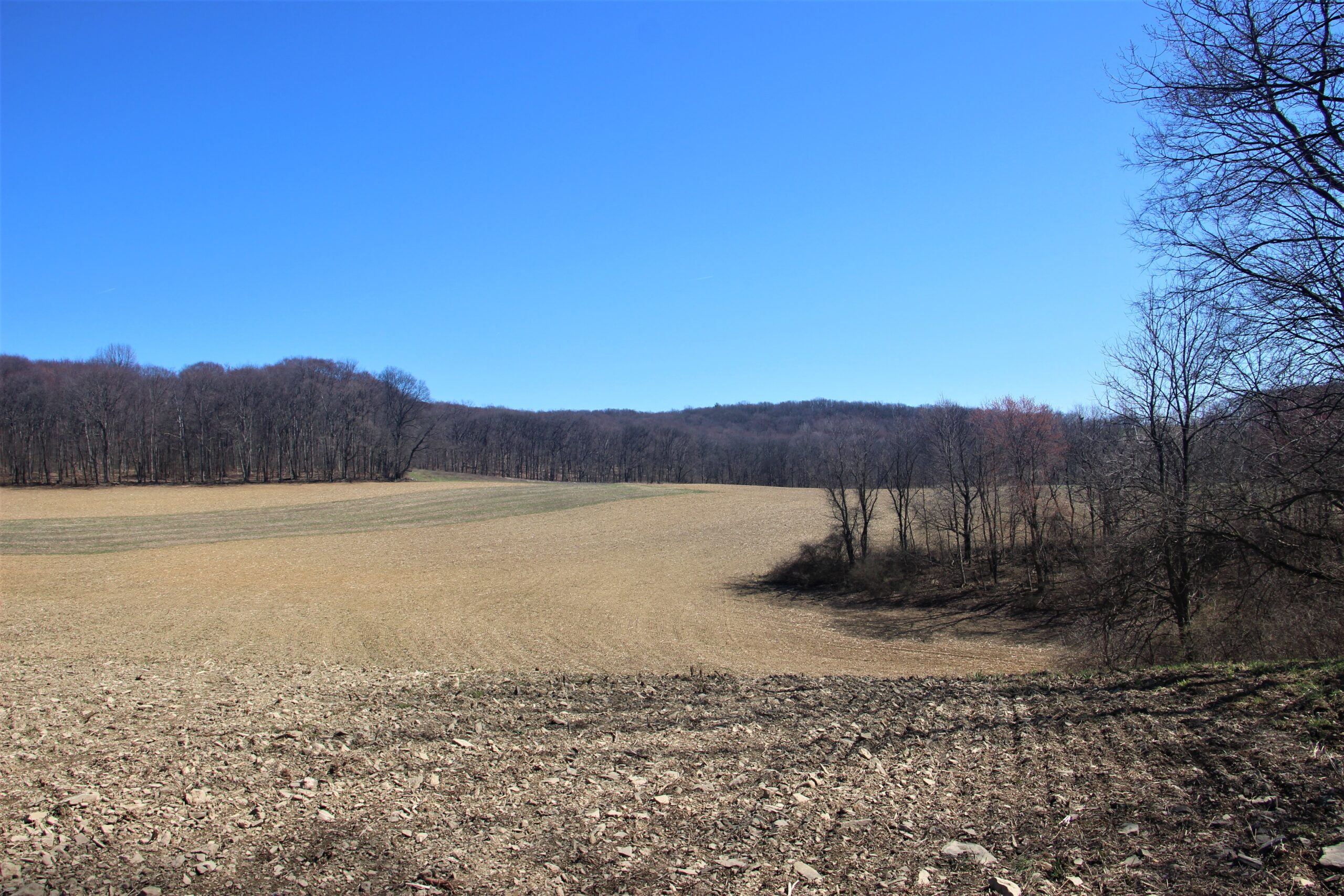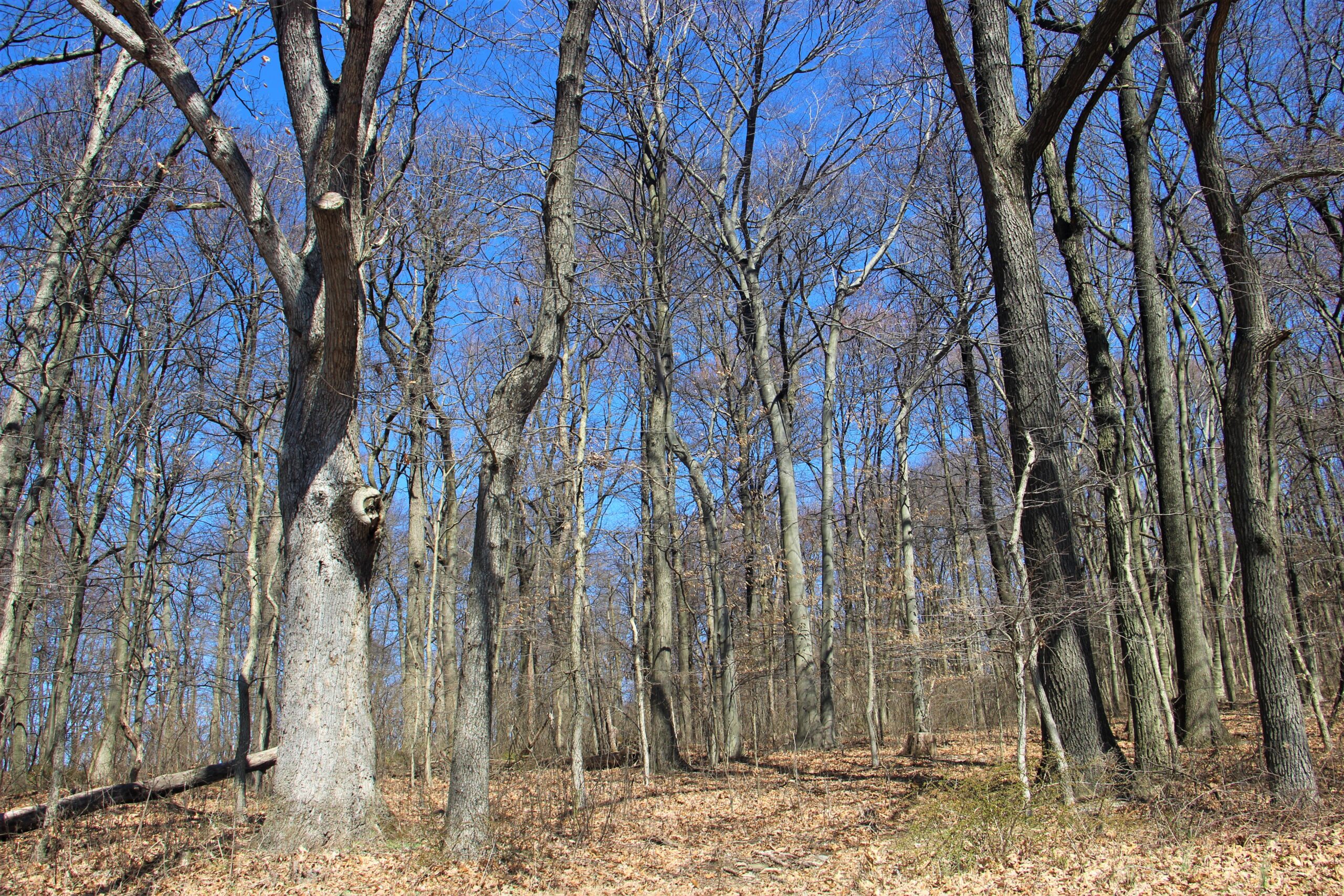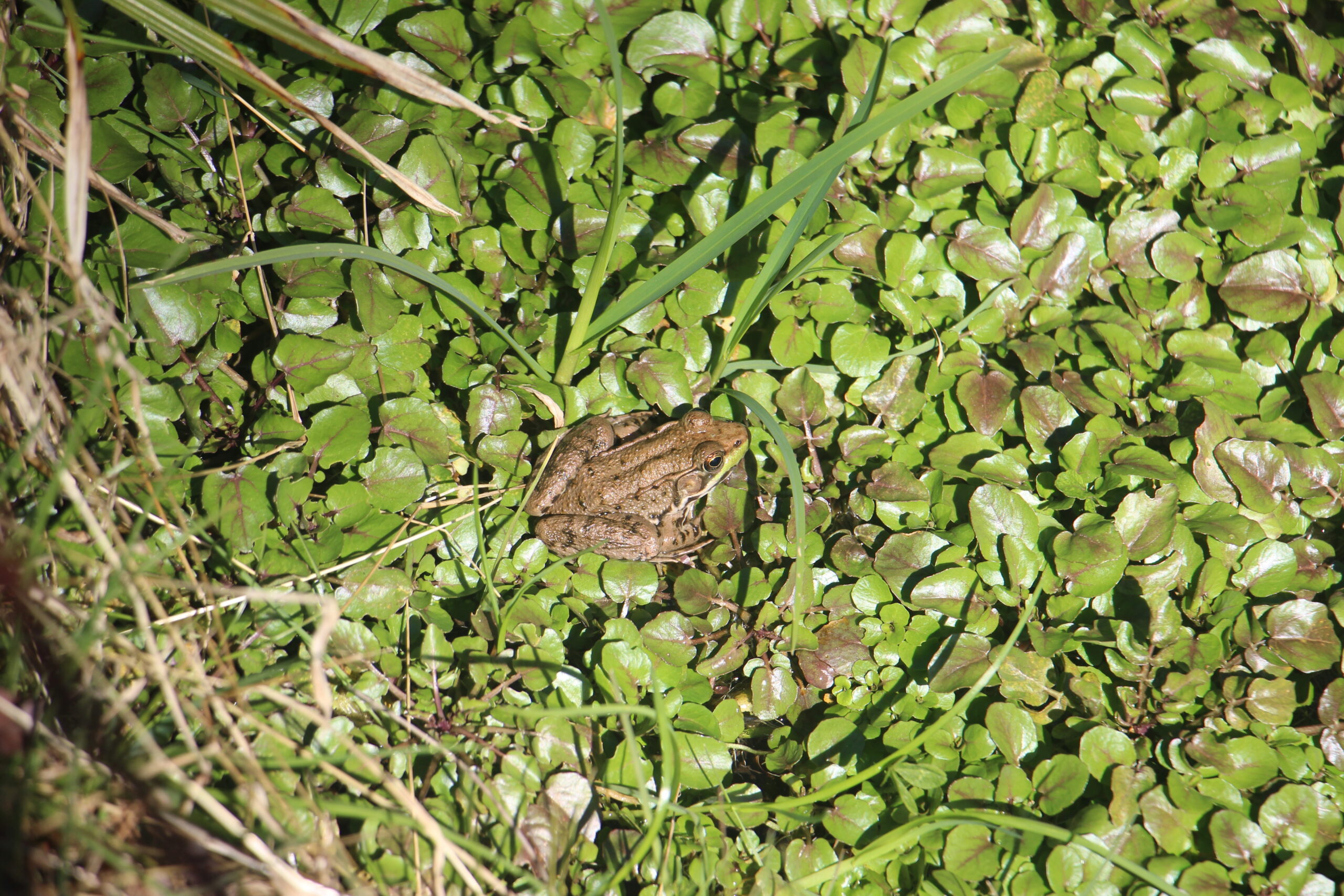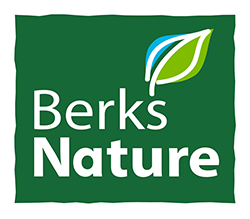Often, great change takes many little steps.
So it goes with conservation. The small actions of individuals build upon each other over time and, little by little, accomplish great change.
The recently established 68.5-acre conservation easement held by Berks Nature in Maxatawny Township is one such example of this gradual transformation.
Much of the property, even its steep slopes, was cleared and heavily farmed before being purchased by the current owner’s grandparents in 1944. They weren’t farmers by trade, but fell in love with country living, investing in a few chickens, cows, and goats.
The property has stayed with the Ormai family ever since, and has been home to Ted Ormai, the current owner, since 1970.
“It was always kind of a sanctuary” reflected Ted, who visited the farm often as a child and was spoiled by the interplay between bucolic fields and rugged woods. Today he walks the same fields and forests he did as a boy, though the view looks considerably different now.
From a vista just uphill from the homestead, he gestures out towards the property, circling a full 360 degrees while pointing out the fields, some farmed organically, others enrolled in the Conservation Reserve Enhancement Program; the sensitive riparian woodlands in the valley below, through which a small but influential tributary of the Mill Creek flows; and the mighty forests rooted in the rocky soil higher still along the ridge.
“It doesn’t have to all be one thing!” he explains.
It’s this diversity that makes this land so special. On just one property, a Berks County family has cultivated a coexistence between farming, forests, and conservation; and they’ve done so using an incremental approach to land stewardship and conservation.
When the current owner first took over stewarding the family property, he began implementing a new vision for the property’s farm fields.
Just as his grandparents allowed trees to return to the steep and rockier slopes of the property, the current owner acknowledged the shortcomings of certain fields as productive farmland under conventional farming practices, and instead elevated their potential for wildlife habitat and organic farming. These fields were incrementally enrolled in the U.S. Department of Agriculture’s (USDA) Conservation Reserve Enhancement Program (CREP).
The CREP functions as an exchange: farmers agree to remove environmentally sensitive land from agricultural production in 10-year contracts, managing these fields instead as natural habitat to support wildlife and healthy soil, and in return these farmers receive a rental payment from the government.
Some of these fields have been enrolled in the Grassland Reserve portion of this program for 10 years, others 20 years.
Ten years of enrollment in CREP as fallow grassland revitalized the property’s soil, and as those CREP contracts concluded several fields were contoured and returned to active agriculture, this time as organically farmed fields.
Whereas the byproducts of conventional farming can pollute waterways, organic farmland provides a net environmental benefit for the surrounding watershed. Organically farmed fields are better at sequestering carbon, a key measure for mitigating global climate change, support a greater diversity of plants and wildlife, and use no synthetic chemicals, like herbicides or pesticides, which can harm aquatic life and even the field’s underlying soil health.
Organic farming isn’t just good for the land, it’s good for people! While crop yields on organic fields are lower, the resulting produce is healthier and can be sold at higher prices.

Organically farmed fields in March at the Maxatawny easement.
Plants get their nutrients from the soil. Unhealthy soil, depleted in nutrients and organic matter, struggles to support healthy plants. Organic farming practices on the other hand prioritize soil health, nurturing healthier plants with higher nutritional value for people.

Hardwood forests grow alongside the actively farmed fields of the Maxatawny easement.
The current owner has shown the same level of care and stewardship to his 22 acres of forest. These woods, a mixture of native hardwoods like oaks, hickories, cherries, and beech, abut a rich network of woodlands hundreds of acres in size just beyond the property’s borders.
This forest hasn’t been timbered since the property changed ownership in 1944. Consequently, the land, while still being actively farmed in a rotation of corn, oats, wheat, and hay, supports more trees today than it did in the late 1930s.
Currently, there are no plans to timber these woods either. On the contrary, the current owner coordinated with Northeastern Forestry Concepts Inc., to produce a Forest Stewardship Plan, which was formalized in 2014.
That’s good news for the Mill Creek, a PA DEP classified Cold Water Fishery and an important freshwater contributor to the Lake Ontelaunee drinking water reservoir.
The Maxatawny easement harbors a tributary of the Mill Creek, which we call a “source water” as it is the originating source for a public drinking water supply downstream. Protecting source water areas reduces the risk of toxic exposures that could contaminate drinking water, making these sensitive areas a high priority for conservation.
The measures implemented here – the organic farming, the verdant stretch of woodlands, and the native grasslands protected through the CREP – all in concert encourage groundwater recharge by facilitating the natural infiltration of rainwater into the soil and subterranean aquifers below, supporting the watershed’s health as well as the security of our drinking water.

A frog enjoys the cool water from one of the springs found on the Maxatawny easement property.
The summer of 2022 marked another milestone in the incremental conservation of this special place when Berks Nature established a conservation easement on 68.5 acres of the property.
For years, applications were submitted to the Berks County Agricultural Land Preservation Board to permanently protect this farm from development under an Agricultural Conservation Easement. But the Ormai family property was not a good fit for the County’s program.
Berks Nature can serve as a powerful facilitator in these moments. Despite the great accomplishments of this successful program (Berks County ranks 3rd in the nation for farmland protection thanks in no small part to the County’s Agricultural Conservation Easement (ACE) initiative) resources and priorities will always inevitably exclude some from Berks County’s enthusiastic farming community and their own conservation ambitions.
In these moments, Berks Nature can step in to help those farmers place protections and development restrictions on their properties.
In this case, protecting a family’s land legacy took precedent over financial gains. After working with Berks Nature for seven years, an easement was established on the property as a donation: the current owner voluntarily relinquished the entire appraised value of the development rights impacted by the easement, requiring no compensation.
This achievement brings both celebration and relief. The current owner is the 3rd generation of his family to own this land and has faced significant challenges through the years keeping the family property safe. But with steady persistence and support from his two sisters, who also backed the conservation easement, the family property is now protected.
Thanks to three generations of incremental work, the conservation ethic that took root here in 1944 will not wither away. The new conservation easement will see to that. Regardless of future owners, this sanctuary will live on in perpetuity.
Gazing out over the light green haze of the springs first sprouts, under the lazy spiraling of a turkey vulture in the bright blue above, the current owner acknowledged matter-of-factly, “It takes care of what’s going to happen here in the future, because I’m not going to be around forever.”
Pressure from development is very real, and very tempting. But when we yield to the persistent sprawl of development, mosaics of habitat like this one are lost, replaced by just one thing: impervious cover in the form of lawn, lots, and roofs.
Here though, there’s no temptation, no decision to be made – the trees stay.
The work doesn’t stop here though. The current owner’s plan extends beyond the 68.5-acre conservation easement.
Across the road, he owns 21 acres of organic farmland that already qualifies for Clean and Green, a preferential tax assessment program (administered by the County), so long as the land remains in agricultural production.
After years of patient progress, this property is finally subdivided on separate deeds as two 10.5-acre parcels, each restricted to one homestead, maintaining the bucolic quality and low-development footprint of the surrounding landscape.
The current owner hopes to sell this property to a conservation-minded individual or family, eager to live alongside protected land and perhaps seeking the same refuge in the country as his grandparents did all those years ago.
Incremental change takes vision. The current owner admits that his own land ethic comes from looking at the bigger picture, not just here but even beyond the boundaries of his family’s land. The actions taken here may seem small, but nature – rich biodiversity, healthy soils, clean water – has found refuge here and will continue to do so in perpetuity thanks to the many small actions of one passionate family.

